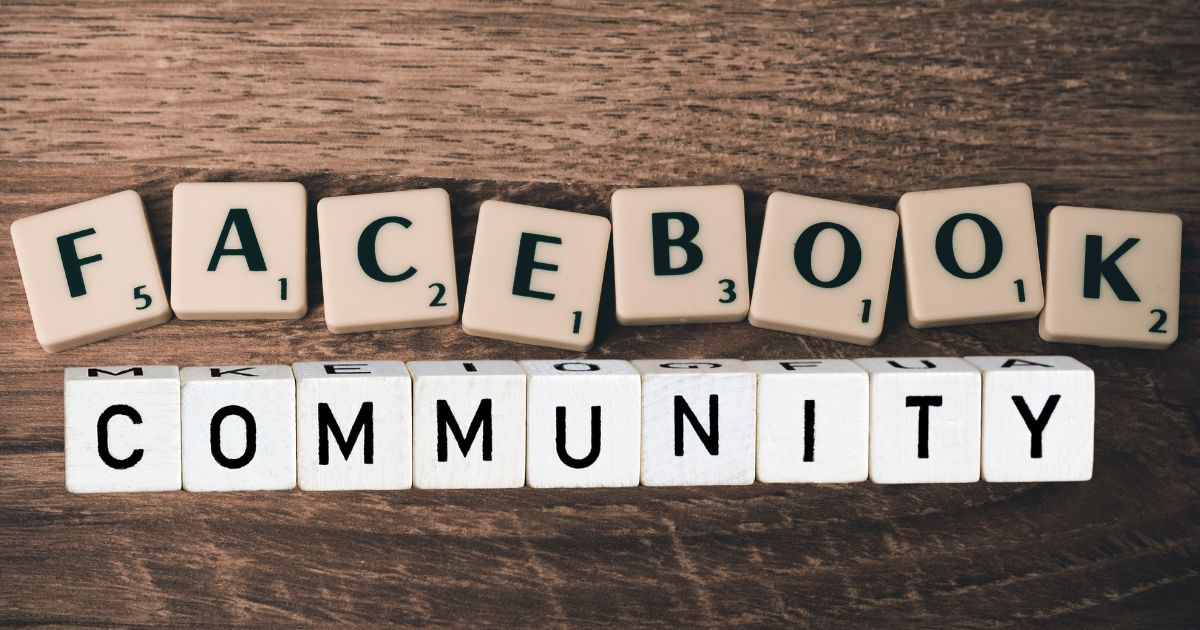Facebook remains a significant platform as it hosts over 2.9 billion active users worldwide. You are a small business, a grassroots organization leader, comic enthusiast–no matter who you are, building a following on Facebook can help get the word out in your voice, bring together kindred souls, and cultivate closer relationships between your audience and art.
But simply launching a Facebook group or page is not enough; to be successful, you also need a static plan of action, tireless dedication, and the ability to create genuine relationships with others on the site. Below are practical movements anyone can make to start or sustain the growth of their Facebook community.
Why Building a Facebook Community Matters
Before we jump into the steps, it’s important to understand why building a Facebook community is worth your time.
- Stronger Engagement: Facebook optimizations meaningful interactions in news feeds. This means that posts friends like or comment on active communities will be more likely to show up in news feeds as well.
- Direct Connection: Engaging in a conversation currency. Create consistent speaking opportunities with your clients, and soon enough, they start to trust your genuine interest in what is on their mind; it will take time, but at last, there arises an appreciative audience that eagerly shares its interest with others.
- Valuable Insights: Having a conversation with your community allows you to understand their demands, choices, and pain points.
- Cost-Effective Marketing: Unlike traditional advertisements, organic community engagement is free. Additionally, active members are often eager to promote your group or pages themselves, providing you with free exposure.
Now, here’s how to turn a simple idea into a thriving community on Facebook.

Step 1: Define Your Purpose and Audience
Before creating your Facebook community, ask yourself these key questions:
- Who is this community for?
- What value will this group or page provide?
- What goals am I trying to achieve?
Step 2: Choose Between a Page or a Group
Facebook offers two main options for building a community: Pages and Groups. Each has its own strengths, so the best choice depends on your strategy.
Facebook Pages
- Good for: Brands, businesses, and public figures.
- Features: Public visibility, advertising tools, and analytics like reach and engagement.
- Best for reaching: Broad audiences.
Facebook Groups
- Good for: Fostering direct interaction and conversations.
- Features: Membership settings (public, private, or hidden), discussion threads, and member notifications.
- Best for fostering: Intimacy and community-driven activity.
Not sure which to pick? If you’re looking to focus on close-knit discussions, go for a group. If visibility and scale are your priorities, a page might be the better option.
Step 3: Create a Space That Stands Out
For Groups:
Focus on creating a strong, engaging description in the “About” section. Outline the purpose of the group, membership guidelines, and what makes this community unique. Use a welcome post to share your group’s goals and encourage new members to introduce themselves.
For Pages:
Choose a memorable profile picture (e.g., your logo) and an engaging cover banner. Craft an “About” section that tells your audience who you are and what makes your page worth following.
Step 4: Consistently Share Valuable Content
The lifeblood of any Facebook community is content. Here’s what works best:
- Educational Posts: Tutorials, guides, or how-to tips that solve your community’s pain points.
- Behind-the-Scenes Updates: Give members a peek into your work or personal life.
- Questions: Encourage conversations by posing thought-provoking questions (e.g., “What’s the best marketing tactic you’ve used this year?”).
- Polls and Surveys: Easy-to-interact-with posts that gauge opinions or preferences.
- Live Videos: These get more organic traction and help you connect in real time.
Consistency is Key
Stick to a regular posting schedule. Your audience should know when to look forward to new updates. Use tools like Facebook Creator Studio to plan and schedule posts in advance.
Step 5: Foster Genuine Engagement
Having members isn’t enough; you need to nurture relationships to build an engaged community. Here’s how:
Proactively Encourage Participation:
- Respond promptly to comments.
- Tag members to ask for their input (e.g., “@Jessica could really offer insights on this topic!”).
- Start challenges (like “Share your creative hacks for the week”) and acknowledge participants.
Create a Safe and Active Space:
For Groups, establish clear rules to ensure discussions remain respectful and productive. Appoint moderators to help enforce these guidelines as your community grows.
Show Appreciation:
Highlight active members through “Member Spotlights” or shoutouts. Acknowledgment makes members feel valued while encouraging others to engage more.
Step 6: Use Analytics to Fine-Tune Your Efforts
Facebook provides invaluable tools to track your community’s performance:
- Group Insights for Groups gives you data on member activity, engagement types, and growth trends.
- Page Insights for Pages tracks post reach, clicks, and demographic data about your audience.
Pay attention to which types of content perform the best. Optimize your strategy to focus on posts that consistently deliver high engagement.
Step 7: Collaborate and Network
Cross-promoting with other brands, pages, or groups related to your niche can significantly broaden your reach. Consider collaborations such as:
- Guest posts or webinars
- Joint giveaways
- Sharing each other’s content
Additionally, don’t hesitate to foster strategic partnerships. By teaming up with other creators or organizations, you can offer even more value to your community members.

Elevate Your Facebook Community Today
The rewards are well worth the effort, though building a Facebook community takes time and dedication. There is an art to it.
If you follow these steps, you can provide a space where members feel valued, inspired, and spurred into action. This is not just a group or page – you are creating something that may help promote your brand, generate long-term relationships, and foster the shared passion to which others can subscribe.
Defining who your audience is and what the purpose of your group is at this point in time is crucial. With the right strategy, your Facebook community, combined with other online community platforms, could become an invaluable part of your business’s success!





